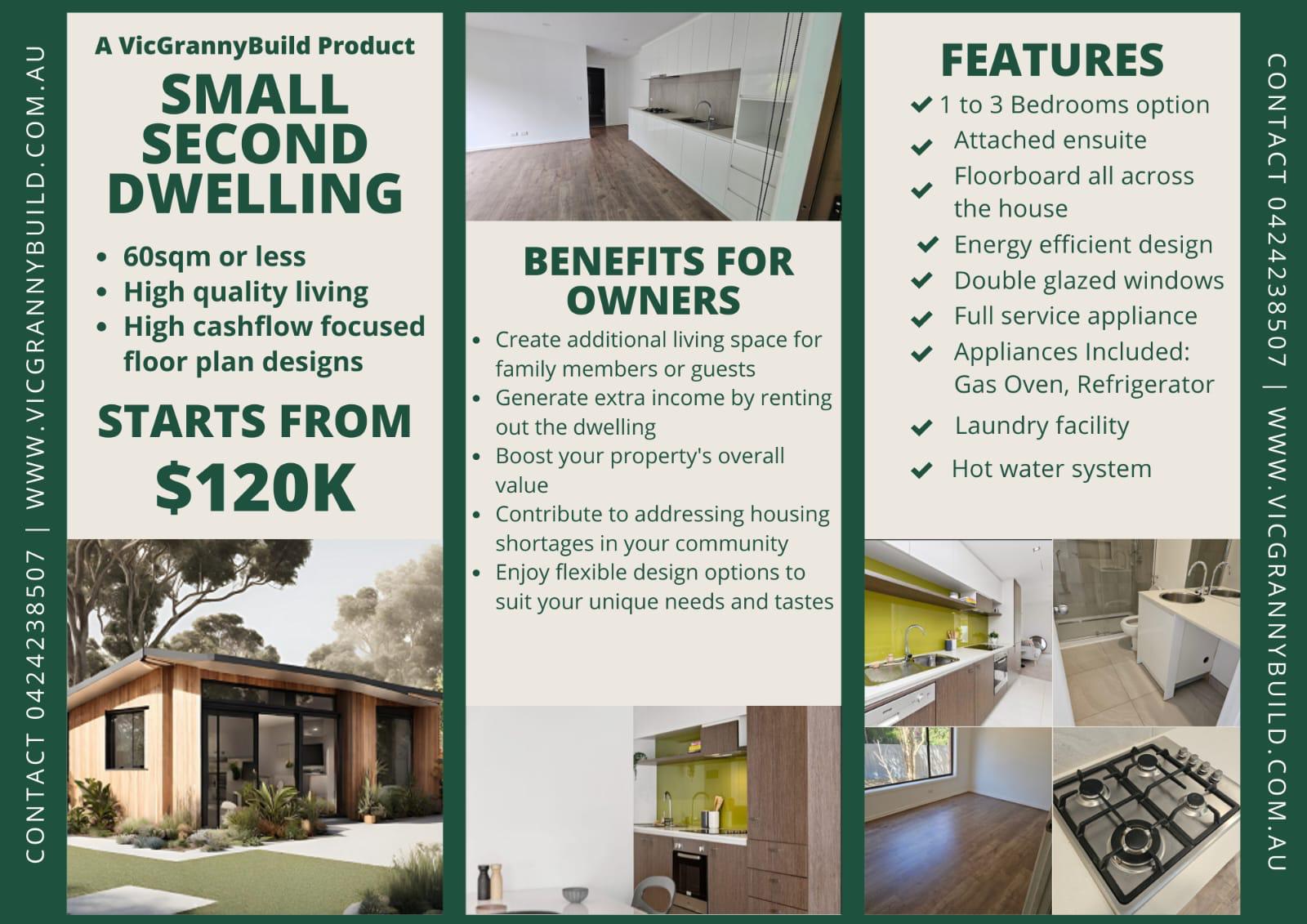Granny Flats
Things you should consider before you build that granny flat
Want to create more living space and push up your property price? Consider building a granny flat! But before you start the groundwork, think about these five key questions.
Adding a granny flat to the backyard seems like an easy way to add value to your property, create room for a growing family or house ageing parents — and, for the most part, it is. But there are a few things you really need to consider before you begin.
Do you have enough space?
The minimum land size required to build a granny flat varies between local councils and states, but a good guide is to have at least a 450-square-metre block. “Based on a 60-square-metre granny flat — the maximum size — you typically need about 100 square metres of land,” That takes into consideration things like setbacks and setbacks from the original house. If you haven’t got 100 square metres, you’re probably not going to fit a 60-square-metre granny flat.”
What do you want to use it for?
You’ll need to determine exactly what you intend to use the space for before you get started. Not only is this essential for the design of the dwelling, it’s also imperative for plans and approvals — in some states, the flat can only be occupied by a direct member of the family, but in others it can be rented out. “If you are going to get it approved as a granny flat, it has to have its own kitchen, bathroom and laundry. In essence, a fully self-sustained dwelling,”
If the building doesn’t require a laundry or bathroom, it could be considered a studio instead. “However, we always warn people that if you get approval to build a studio, while it can have a bathroom, you can’t add a kitchen or laundry.”
How much will it cost?
You may have seen “flatpack” granny flats advertised for as low as $25,000, but there are many hidden costs throughout the process. “Typically, $100,000, plus GST, would be an entry-level granny flat — that includes design approval and a two-bedroom, one-bathroom, single- storey dwelling.” And there are other costs, too, “In most cases you need to upgrade the existing electrical board so it can cope with another house, there’s landscaping to consider, and labour costs that depend on access to the site.”
Is the approval process complicated?
“If all the boxes are ticked in terms of size, height, setbacks and landscaping ratios, then it’s quite easy to get approval through a private certifier,” But it does all depend on where you live. “In some cases, you have to lodge the DA through the council for approval and you can’t use a private certifier — this is in places like bushfire zones and flood zones, or heritage sites.” For this part of the process, check with your local council and, if your builder or supplier is unable to help, seek a professional consultant to help with your application.



